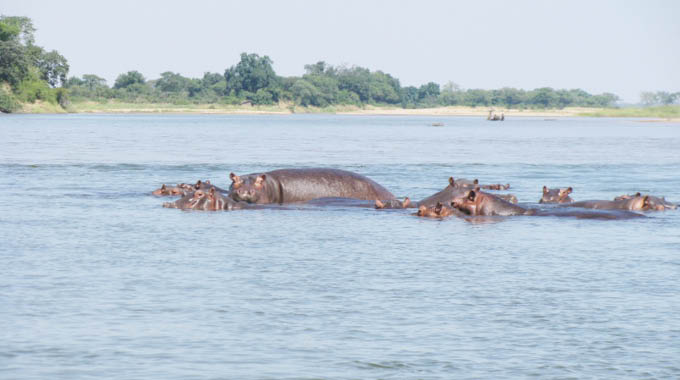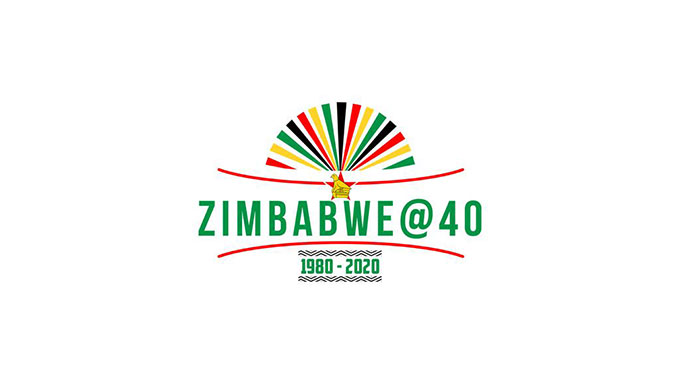
The Sunday News

Pathisa Nyathi
FOR the cadres operating from Zambia during the liberation struggle the Zambezi River posed a serious challenge and obstacle. The waters were deep and, in some places, swiftly flowing. In addition, the gorges on either side presented a terrain that was difficult to navigate. On the Rhodesian side in particular, the area between Mlibizi and the road to Binga was heavily land mined and infested with anti-personnel mines. Be that as it may, the river had to be crossed.
In this article we continue with the various forms of transport that were made use of during the prosecution of the armed struggle. Beyond the train, there were other modes that played an important role. The Tonga have, for a very long time, been accomplished boat men. Out of huge tree trunks they crafted dugout canoes which they rowed across water bodies such as the Zambezi River. King Lobengula, in his flight from whites pursuing him, relied on the Tonga who assisted him cross the treacherous river on his way to the land of the Angoni of King Mphezeni Jele in Chipata, Zambia.
Tshinga Dube records in his biography, “Tshinga Dube: Quiet Flows the Zambezi,” how in 1966 they used dugout canoes supplied by the Lozi to cross the Zambezi River into Botswana where Peter Mackay transported them along the road to Francistown. They dropped off along the way and entered the Wankie National Park (now the Hwange National Park) and proceeded to Tsholotsho. Their group was scouting the way for the joint incursion involving both the African National Congress (ANC)’s Umkhonto we Sizwe (MK) and the Zimbabwe African People’s Union (Zapu)’s military wing scheduled for 1967. The joint group was known as the Luthuli Detachment. The dugout canoes allowed water to seep in and some cadres worked on scooping out the water while others had their guns trained at the marauding hippos. The ubiquitous hippos were an ever-present menace. However, the group managed to get across the river to a point where Mackay picked them.
Rafts were another mode of transport used to carry personnel, military hardware and munitions across the Zambezi River. This was particularly the case in 1968 during the launch of the Pyramid Detachment commanded by Moffat Hadebe. After crossing, they proceeded to Sipolilo. The rafts, comprising empty 44-gallon drums consisting of wooden poles, were used to get personnel and their weapons across. Air trapped within the drums reduced the density of the rafts, thus making them float even though they had quite a heavy payload. Many weapons were lost to the treacherous waters of the fast-flowing Zambezi River.

In those days, when the struggle was in its nascent stage, donkeys came in handy as transport once the Zambezi River had been crossed. They were used as beasts of burden to transport logistics: food, military hardware and munitions. There were times when, after crossing, food became scarce. The first villages were far away beyond the river. The cadres were forced to rely on the transport donkeys as sources of much needed protein. Unbeknown to other comrades, the donkeys were shot and prepared for a meal. When others asked what meat was being consumed, the ready answer was “transport.”
Donkeys provided both transport and food and have not been sufficiently recognised or “thanked” for their role in the struggle for independence, said one observer I interviewed who had witnessed donkey meat being made available to hungry cadres. Dr Dumiso Dabengwa, Masala Sibanda, Gedi Dube and Jack Amos Ngwenya used to tell the story with glee and amusement. Only when ZPRA was getting military support from the Soviet Union did dinghies come into use. Dinghies were inflatable and used to get cadres en route to the front across the river. Dinghies were certainly an improvement on the dugout canoes.
Donkeys provided draught power. They pulled scotch carts which villagers used to transport produce to the markets in mining towns, visiting relatives and indeed in transporting injured guerrillas. The opening of the Southern Front (SF) facilitated the spiriting out of injured comrades in the front into Botswana for treatment. The front was thus a conduit for the injured cadres needful of hospitalisation but also in the infiltration of cadres proceeding to operational zones such as Kezi, Plumtree, Kafusi, Beitbridge and many others in the southern part of the country.
Some people may not fully appreciate the role played by bicycles. Bicycles were a reliable means of transport just before, but more so, after colonisation. The Humber, Raleigh, Philips and the BSA were some of the bicycle models that were available. In rural areas especially, the bicycle was a frequently used mode of transport. Long distances were cycled by workers going to their places of employment.
Back then, there were few buses available. Men cycled from Lupane, Nkayi, Tsholotsho, Plumtree, Filabusi and Kezi to Bulawayo. Even during the armed struggle the bicycle was still in use. Cadres relied on intelligence some of which was supplied by the youth in rural areas where operations took place. The bicycle came in handy when swift movements were required to reconnoitre movements of the Rhodesian soldiers. Dispatched cyclists would report back to the fighters so that, armed with intelligence regarding the sizes of enemy forces, the weapons and fire power available to them, appropriate counter attacks could be planned.
Parks Ndlovu who operated in Matabeleland South following the opening of the Southern Front in 1974 tells a story where he was shot by the enemy and, in the process, had his intestines gouged out. He considered himself a desperate case that would not survive. He accordingly gave his weapons to his comrades and armed himself with a hand grenade. He managed to trudge on to a village where he sought assistance. The man at the village was a bit reluctant to offer assistance. Parks knew the enemy force would track his blood spoor and catch up with him.
The man who was dillydallying was forced by Parks to carry him on his bicycle with deflated tyres. The man had deflated the tyres as a way of excusing himself from providing a service to Parks who was not fooled. The man cycled the injured Parks all the way across the boundary Shashe River. He finally got to Selebi Phikwe Hospital where he was attended to and recovered. I remember vividly at Elangeni Training Centre in Bulawayo when Parks narrated his ordeal in the presence of Phelekezela Mphoko whose son Siqokoqela and I had persuaded him to join the ex-ZPRA cadres, in particular the field commanders, who were narrating their war time experiences. I chaired the meeting that took place after journalists from the private media had been asked to leave the venue. Parks bared his stomach to show the healed massive scar. He was not an amused person as he had not received a single medal of recognition for his role in the struggle for independence.
By the entrance of the building that houses the National Archives of Zimbabwe (NAZ) there is a rusty scooter whose narrative I have not had sight of. However, it is known to some of us that both the NDP and Zapu party organizers made use of scooters to mobilise support for the parties. Sikhwili Khohli Moyo (SK) was one such individual who sacrificed a lot to win support for the two parties. He was a determined recruiter and at one time visited Solusi Mission in the company of George Nyandoro. Many youths at the school were politicised and would soon join the liberation struggle. Dickson Netsha Sibanda, whose biography I penned some years back, was attending the SDA institution and left for Zambia in 1962 when the net was closing on him.
Sikhwili left before Zapu was banned and played a leading role in welcoming recruits to Zambia, arming and training them and bringing in weapons from Tanganyika to Zambia through Tunduma on the border between the two countries. In the next article we shall focus the spotlight on other modes of transport such as ships, airplanes, cars and buses.



